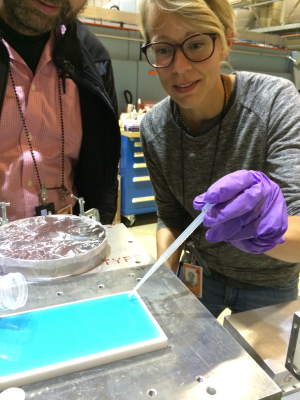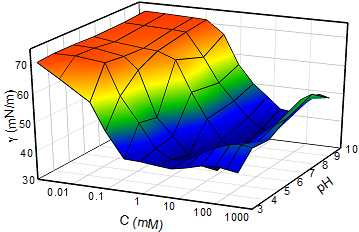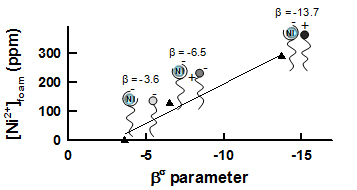Metal chelation
Metal chelators are molecules with inherent functionality to capture and bind specific metal ions. We are working with both chemicals and materials with these outspoken properties. The dual functionality of designed chelating surfactants offers possibilities to recover formed metal complexes that can be further treated to regenerate the chelating surfactant and recover the metals.
Chelating surfactants
The combination of surface active and chelating properties in a single molecule results in a chelating surfactant. These are water soluble molecules suitable for chelation in most aqueous systems. By separating the metal complexes from industrial water, release of chelating agents and metals can be prevented. Besides the traditional areas of use for chelating agents, the separable functionality offers new application areas. The concept can be used to recover valuable metals for example from metal finishing industry, or to purify metal contaminated water or soil. Chelating surfactants may also be utilized in consumer products where a combination of chelating agents and surfactants are traditionally used. The nonpolar part makes the structure suitable in hydrophobic matrices, such as cosmetic creams and lotions.

The metal complexes are easily separated and recovered from water phases by for example foam flotation. In the flotation process, gas is bubbled through the liquid and surface active materials adsorb at the air-water interfaces. The recovery is enhanced by adding a foaming agent and the phase transfer of metal ions from the bulk to the foam depends on the foaming ability of the system as well as on the interactions between the chelating surfactant and the foaming agent. These interactions are investigated by calculating interaction parameters for the systems.
The collected foam from the flotation contains the metal complexes. This foam phase is further treated by electrolysis to separate and regenerate the chelating surfactant and the metals.


Besides the technical aspects, chelating surfactants are interesting from a fundamental scientific point of view. As surfactants, they are rather extreme with their large, multiply chargeable and pH-responsive headgroups. In the presence of metal ions chelating surfactants form coordination complexes, sometimes referred to as metallosurfactants. The critical packing parameter and hydrophobicity can be tuned by varying the pH, ionic strength, and valence of the counterion. The adsorption at the air-water interface is examined by surface tension measurements and neutron reflectivity. The micellization in the bulk phase is studied using NMR diffusometry and pH measurements.
Metal chelating materials
Porous solids of inorganic and biomaterials can be designed into efficient metal chelators by chemical or physical functionalization, for instance to be used in filter applications. We are designing and investigating materials that can capture cations and oxyanions of heavy metals specifically.

